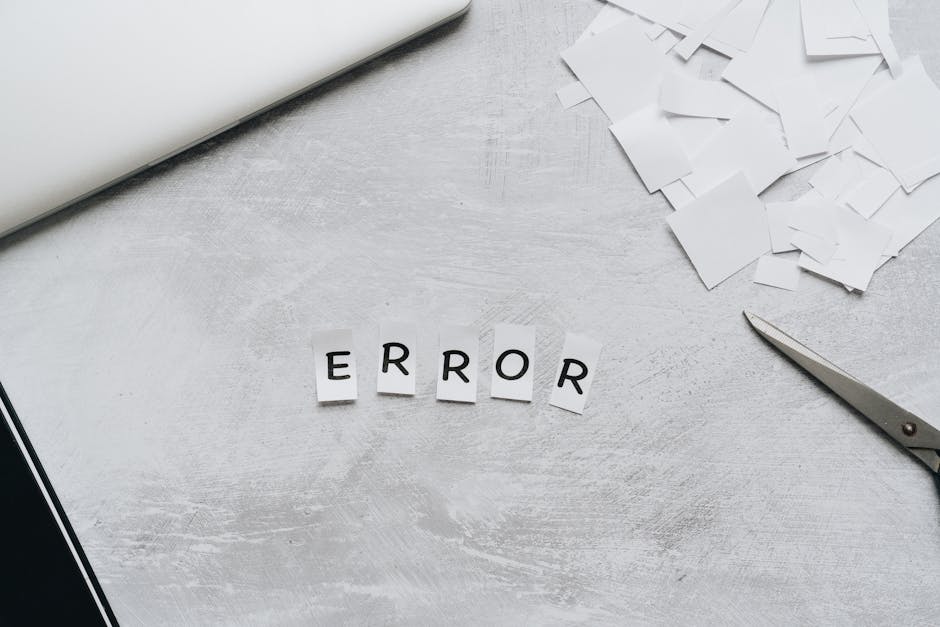Godot, the open-source game engine, has become a favorite for indie developers and larger studios alike. One common challenge developers face is ensuring code robustness, especially when dealing with arrays. Specifically, developers often need to `godot check array if null and not error out`. This is critical for creating stable and predictable games. In this article, we will explore techniques and best practices for safely handling arrays in Godot, ensuring your game doesn’t crash due to unexpected null values. We’ll focus on methods relevant for 2025, considering the engine’s evolution and common development patterns.
Understanding Null Arrays and Potential Errors
In Godot, an array can be `null` (or `Nil` in GDScript) or contain `null` elements. Accessing a `null` array directly, or attempting to perform operations on a `null` value, will result in an error, halting the game’s execution. Therefore, a crucial first step is to proactively `godot check array if null and not error out` before attempting any operations on the array.
Failing to handle `null` arrays gracefully can lead to frustrating debugging sessions and a poor player experience. A well-structured game anticipates these potential issues and implements checks to prevent errors from occurring. This proactive approach enhances game stability and player satisfaction.
Basic Checks for Null Arrays
The most straightforward way to `godot check array if null and not error out` is to use a simple `if` statement. This conditional check verifies if the array is not `null` before proceeding with any operations. This basic check is fundamental to safe array handling.
Here’s an example in GDScript:
gdscript
var my_array: Array = null
if my_array != null:
# Safely perform operations on the array
print(“Array is valid”)
print(my_array.size()) # or any other array operation
else:
# Handle the case where the array is null
print(“Array is null”)
While this example is simple, it’s surprisingly effective. By using this check, you prevent common errors related to accessing null arrays, ensuring that your game runs smoothly. Remember to tailor your handling of the null case to your specific game logic.
Advanced Techniques for Null Array Handling
Beyond the basic `if` statement, more advanced techniques offer greater flexibility and cleaner code. These methods can be integrated into your scripts to handle `null` arrays more elegantly.
Using the `is_instance_valid()` Function
The `is_instance_valid()` function is useful when working with object references in arrays. While it doesn’t directly check if an array is `null`, it can verify if the objects *within* the array are still valid. This is especially relevant when dealing with dynamically created and destroyed game objects. It’s useful to `godot check array if null and not error out` indirectly when an array contains objects that could be destroyed.
Here’s an example:
gdscript
var object_array: Array
func _ready():
object_array = [Node.new(), null, Node.new()] # example array with some nodes and null
func process_array():
if object_array != null: # check array for null first
for item in object_array:
if is_instance_valid(item):
print(“Valid object:”, item)
# Perform operations on the valid object
else:
print(“Invalid object (likely destroyed)”)
# Handle the case where the object is no longer valid
else:
print (“Array itself is Null”)
Defensive Programming with Assertions
Assertions can be useful during development to catch unexpected `null` values. An assertion will cause the game to pause or break if a certain condition is not met, making it easier to identify and fix bugs. They are a type of `godot check array if null and not error out`, however they are used mainly for development, not in production code.
Example:
gdscript
var data_array: Array = null
func process_data():
assert(data_array != null, “Data array cannot be null!”) # stops game if null
# Now we know the array is not null, so it is safe to operate on it
print(“Array Size: “, data_array.size())
Remember to remove or disable assertions in production builds, as they can impact performance. Use them strategically during development to maintain code quality.
Safe Array Access with `get()` and `set()`
Godot provides methods like `get()` and `set()` for safer array access, especially when dealing with potentially out-of-bounds indices. While these functions don’t directly address the `null` array issue, they can prevent errors that can arise when combined with `null` array situations. It complements `godot check array if null and not error out` by preventing index related errors.
Example:
gdscript
var values: Array = []
func safe_access(index: int):
if values != null:
if index >= 0 and index < values.size():
var value = values[index]
else:
print("Index out of bounds.")
else:
print ("Array itself is Null")
Using Godot’s Optional Typing for Better Null Safety
Godot 4 introduced optional typing which allows specifying that a variable can be `null`. This is a significant step towards improving code safety and reducing errors. When you declare a variable with a type followed by `?`, you are indicating that it can hold either a value of that type or `null`.
Example:
gdscript
var optional_array: Array? = null
func process_array():
if optional_array != null: #Still use regular if check.
print(“Array Size: “, optional_array.size())
else:
print(“Optional Array is Null”)
By explicitly declaring that an array can be `null`, you make your code more readable and easier to understand. This explicit declaration helps catch potential errors at compile time or during development, contributing to safer and more robust code.
Handling Empty Arrays vs. Null Arrays
It’s important to distinguish between an empty array (an array with no elements) and a `null` array (an array that doesn’t exist or hasn’t been initialized). They require different handling strategies. An empty array is a valid object that can be iterated over, while a `null` array will throw an error if you attempt to access it directly. The best way to `godot check array if null and not error out` when the array is empty is to make sure the array is initialized.
Here’s an example showcasing the difference:
gdscript
var empty_array: Array = [] # an empty array
var null_array: Array = null # a null array
func check_arrays():
if empty_array.size() == 0:
print(“Empty array has no elements.”)
if null_array == null:
print(“Null array is, well, null.”)
The distinction is crucial for determining the correct course of action in your code. Empty arrays often require different logic than `null` arrays.
Real-World Examples and Use Cases
Let’s consider some real-world scenarios where handling `null` arrays is critical. Imagine a game where enemy data is loaded from a file into an array. If the file is missing or corrupted, the array might be `null`. Your game needs to gracefully handle this situation to prevent a crash.
Another example is in a multiplayer game where data is received from the network. If the connection is lost or the server sends incomplete data, an array could be `null`. Robust error handling is essential to maintain a stable multiplayer experience. A good example is how you can check connection quality in online games which relates to null data.
Using the strategies we’ve outlined, such as null checks with `if` statements and defensive programming practices, you can build resilient systems that can withstand unexpected data conditions. In those situations you would need to `godot check array if null and not error out`.
Best Practices for 2025
Looking ahead to 2025, several best practices will become increasingly important in Godot development:
- Embrace Optional Typing: Use optional typing extensively to make your code safer and more readable.
- Prioritize Defensive Programming: Implement null checks and assertions proactively.
- Write Unit Tests: Thoroughly test your code to ensure it handles null arrays and other edge cases gracefully.
- Use Code Linters and Static Analyzers: Utilize tools to identify potential issues early in the development process.
- Stay Updated with Godot’s Evolution: Keep abreast of new features and best practices introduced in future Godot versions. For example, keep tabs on new features and upgrades to the Godot engine from the RockPaperShotgun’s coverage to implement the best practices for the engine.
By following these guidelines, you’ll be well-equipped to create robust and maintainable Godot games that can handle the complexities of modern game development. You will have better and efficient methods to `godot check array if null and not error out`.
Remember that investing in robust error handling and null-safe code is an investment in the overall quality and stability of your game. It translates to fewer crashes, a better player experience, and less time spent debugging.
You can find information about application developmen on: appinnovators6
FAQ Section
Here are some frequently asked questions about handling `null` arrays in Godot:
How do I `godot check array if null and not error out` specifically within a function?
Inside a function, use a simple `if` statement at the beginning to check if the array is `null`. If it is, either return early or perform some other appropriate error handling.
What is the difference between `null` and an empty array in Godot?
A `null` array is a non-existent array, while an empty array is a valid array object with no elements. Attempting to access a `null` array will result in an error, while an empty array can be accessed without error.
Should I use assertions in production code to `godot check array if null and not error out`?
No, assertions are primarily for development and debugging. They should be removed or disabled in production builds to avoid performance impacts.
Can I use optional typing in Godot 3 to handle null arrays?
No, optional typing was introduced in Godot 4. In Godot 3, you need to rely on explicit null checks using `if` statements.
Is there a built-in function in Godot to safely access array elements without causing an error if the array is null?
No, there is no single built-in function to safely access array elements without error if array is `null`. You can write your own custom function, or you can implement the methods outlined in the article. You must `godot check array if null and not error out` yourself.
Conclusion
Handling `null` arrays gracefully is a fundamental aspect of robust Godot game development. By implementing the techniques and best practices discussed in this article, you can significantly reduce the risk of errors and crashes in your games. Whether it’s simple `if` statements, optional typing, or defensive programming, each strategy contributes to a more stable and enjoyable player experience. As you continue to develop games in Godot, remember to prioritize code safety and error handling to ensure the long-term success of your projects. Being able to properly `godot check array if null and not error out` is an important skill to master.


















